 |
Roberts Revival R250 - U.K. 1995 |
 |
 Description
Description |
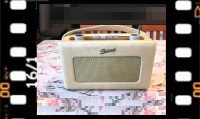 |
Descrizione Documentazione |
|||
|
|
|||||
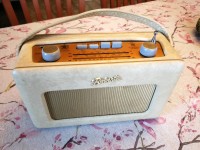 |
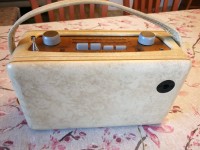 |
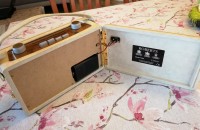 |
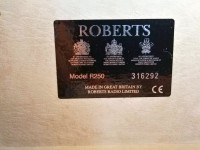 |
||
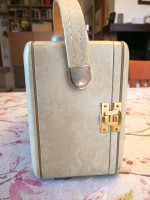 |
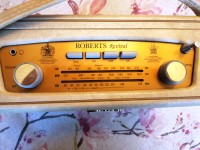 |
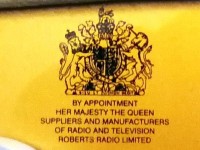 |
V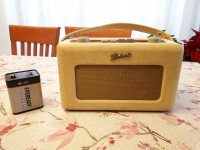 |
||
 La Roberts Revival R250 fu
commercializzata nel Regno unito a partire dal 1996. Per il nuovo
apparecchio la Roberts Radio Co.Ltd scelse di tornare allo stile
con il quale aveva riscosso grande successo a partire dalla metà degli
anni 50 del secolo scorso, prima con gli apparecchi portatili a valvole
tipo R55 ed
R66, e poi con le radio a
transistor RT1 e
R200. Tutti questi apparecchi avevano la
tipica forma a valigetta arrotondata agli angoli per realizzare la quale
Harry Roberts aveva preso spunto da una borsetta di sua moglie.
La Roberts Revival R250 fu
commercializzata nel Regno unito a partire dal 1996. Per il nuovo
apparecchio la Roberts Radio Co.Ltd scelse di tornare allo stile
con il quale aveva riscosso grande successo a partire dalla metà degli
anni 50 del secolo scorso, prima con gli apparecchi portatili a valvole
tipo R55 ed
R66, e poi con le radio a
transistor RT1 e
R200. Tutti questi apparecchi avevano la
tipica forma a valigetta arrotondata agli angoli per realizzare la quale
Harry Roberts aveva preso spunto da una borsetta di sua moglie.Il prodotto degli anni '90 peṛ era molto diverso dalle radio di quarant'anni prima. Il mobile era sempre in legno rivestito in similpelle dai vari colori, ma il contenuto era aggiornato con la tecnologia in auge a fine 900. La radio era una supereterodina in grado di ricevere tre gamme d'onda: le Onde Medie, le Onde Lunghe e la FM e il circuito era completamente realizzato con circuiti integrati. La R250 utilizzava tre integrati: un BA4424N incaricato del trattamento del segnale FM: preamplificatore RF, oscillatore e mixer e preamplificatore di frequenza Intermedia; un BA4236L: amplificatore Frequenza Intermedia FM e demodulatore, oscillatore AM, mixer e amplificatore FI AM, demodulatore e AGC. Il terzo era un TDA7231 che fungeva da preamplificatore di Bassa Frequenza e amplificatore di potenza audio. Come nelle radio anni '50 e '60 la scala parlante della R250 era analogica ed era posta sulla parte superiore del mobile, con alla sinistra la manopola del'interruttore di accensione e volume e quella della sintonia sulla destra. Sempre a destra c'era l'antenna telescopica per la FM mentre a sinistra, sopra il controllo del volume c'era una presa per cuffia stereo da 3,5 mm. Tutto sommato la radio funzionava egregiamente senza soffrire dei disturbi e delle tipiche distorsioni generate dall'utilizzo dei circuiti integrati. Un difetto evidente invece era la scarsa qualità della riproduzione sonora che a fronte della discreta potenza a disposizione (800 mW) non si esprimeva al meglio a causa del misero trasduttore sonoro utilizzato. L'altoparlante infatti aveva un diametro di soli 2.75 pollici (7 cm), un netto peggioramento in confronto ai Rola (Celestion) da 5 pollici (12.7 cm) che rendevano il suono delle radio Roberts degli anni 50 e 60 inconfondibile, caldo e potente. L'alimentazione comunque era sempre fornita da una batteria a secco da 9 V tipo PP9 (pile che sono ancora oggi in commercio), in alternativa la radio poteva essere alimentata tramite un adattatore esterno da 220 Vac a 9 V dc che si collegava alla presa tonda da 5.5 mm posteriore. Le dimensioni erano: (LxAxP) 22,9 x 15,2 x 9,5 cm, e il peso era di 1,560 kg senza batterie. IK3HIA © 2023. |
|||||
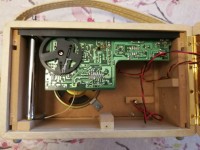 |
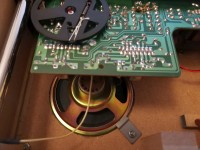 |
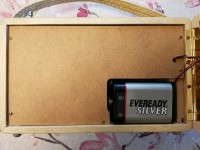 |
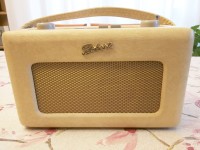 |
||
|
Return to top of page
|
|||||
 The Roberts Revival R250 was marketed in the
United Kingdom starting in 1996. For the new device, Roberts Radio
Co.Ltd chose to return to the style with which it had enjoyed great
success since the mid-1950s, first with the
R55 and
R66
type portable tube devices, and then with the
RT1 and
R200
transistor radios. All of these devices had the typical rounded-cornered
briefcase shape that Harry Roberts had taken from a handbag owned by his
wife.
The Roberts Revival R250 was marketed in the
United Kingdom starting in 1996. For the new device, Roberts Radio
Co.Ltd chose to return to the style with which it had enjoyed great
success since the mid-1950s, first with the
R55 and
R66
type portable tube devices, and then with the
RT1 and
R200
transistor radios. All of these devices had the typical rounded-cornered
briefcase shape that Harry Roberts had taken from a handbag owned by his
wife.However, the product of the 90s was very different from the radios of forty years earlier. The cabinet was still made of wood covered in imitation leather in various colours, but the content was updated with the technology in vogue at the end of the 1900s. The radio was a superheterodyne capable of receiving three wavebands: Medium Waves, Long Waves and FM band and the circuit was completely made with integrated circuits. The R250 used three ICs: a BA4424N in charge of FM signal processing: RF preamplifier, oscillator, mixer and Intermediate frequency preamplifier; a BA4236L as FM IF amplifier and demodulator, AM oscillator, FI AM mixer and amplifier, demodulator and AGC. The third IC was a TDA7231 which acted as a Low Frequency preamplifier and audio power amplifier. As in the radios of the 50s and 60s, the R250 dial scale was analogical and was placed on the upper part of the cabinet, with the power and volume switch knob on the left and the tuning knob on the right. Also to the right was the extendable FM antenna and to the left, above the volume control, was a 3.5mm headphone socket. All in all, the radio worked well without suffering from the disturbances and typical distortions generated by the use of integrated circuits. An obvious defect however was the poor sound quality which, in the face of the discrete power available (800 mW), was not expressed at its best due to the sound transducer used. In fact, the R250 speaker had a diameter of only 2.75 inches, a sharp worsening compared to the 5-inch Rola (Celestion) speakers which made the sound of the Roberts radios of the 50s and 60s unmistakable, warm and powerful . Power was always supplied by a 9 V dry battery type PP9 (batteries that are still on the market today), as an alternative the radio could also be powered by an external 220 Vac to 9 V dc adapter connected to the rear 0.216in round socket. The dimensions were: (WxHxD) 9 x 6 x 3.75 inch, and the weight was 3 lb 7 oz (3,436 lb) without batteries. IK3HIA © 2023. |
|||||
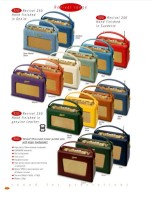 |
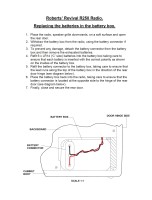 |
 |
 |
||
|
Return to top of page
|
|||||
|
|
Return to: IK3HIA home page |
|
Return to: Roberts Radio page |
|
Return to: Transistor Radio |